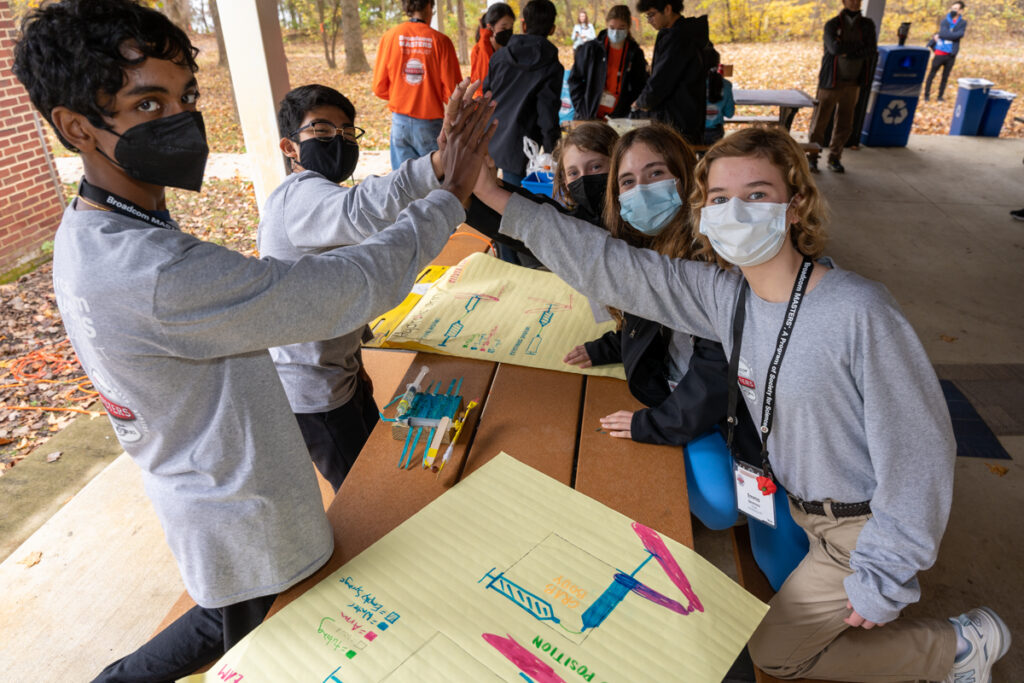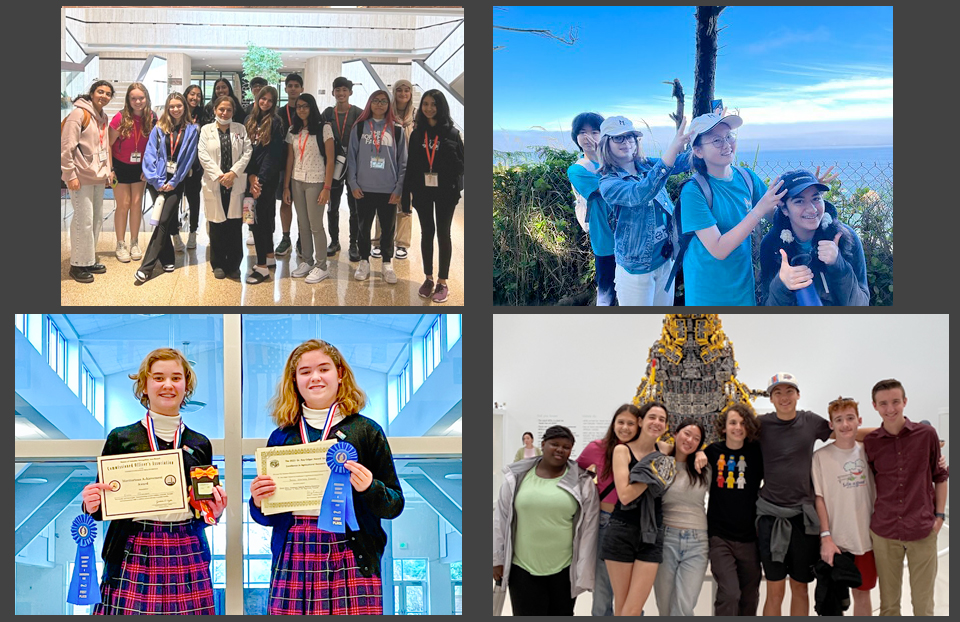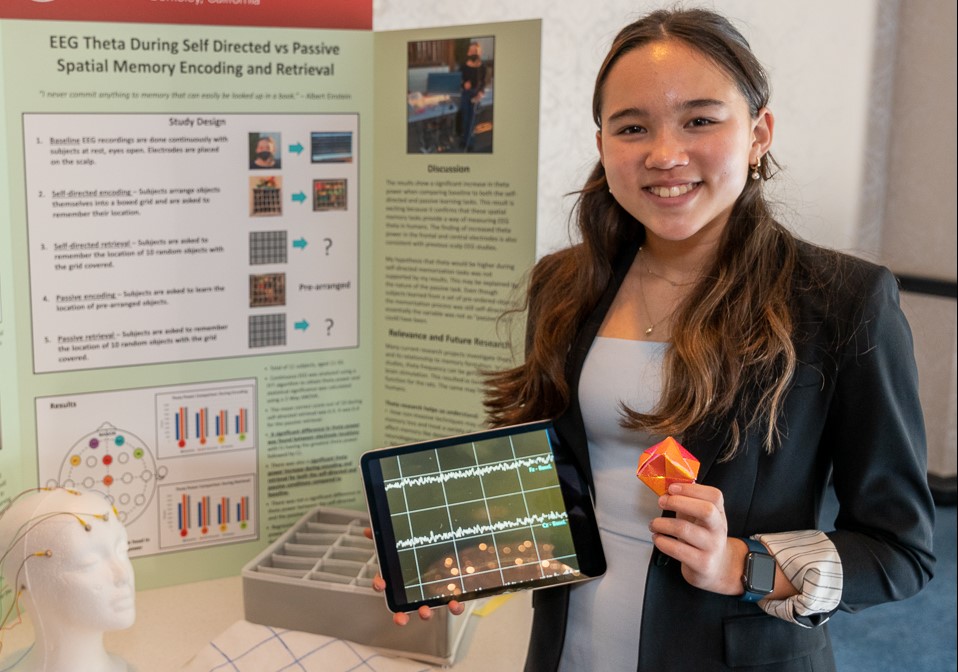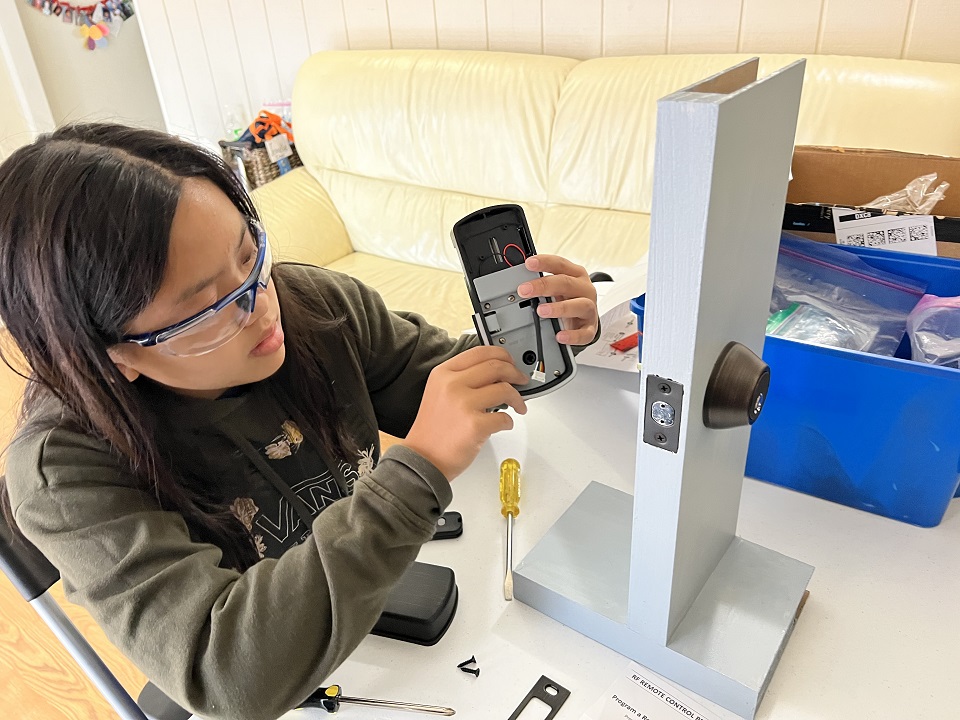Down by the bay, Broadcom MASTERS finalists take on biomimicry
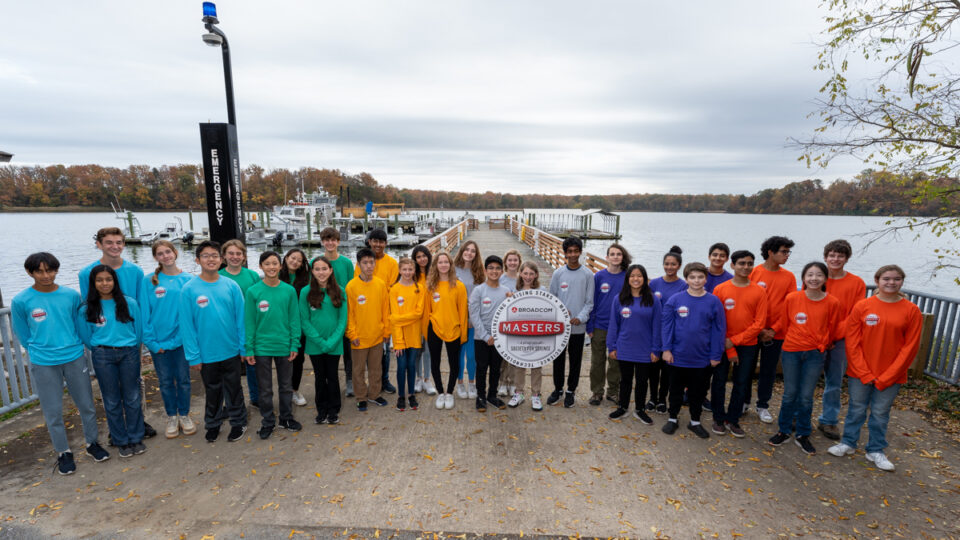
For the first time since 2019, Broadcom MASTERS, the nation’s premier STEM competition for middle school students, was held in person in Washington, D.C. In addition to presenting their original research projects to a panel of judges, the 30 finalists also participated in a series of team challenges that not only tested their creative and scientific ingenuity, but also gave them a chance to collaborate with one another.
One of these challenges took place at the Smithsonian Environmental Research Center (SERC), one of the world’s leading ecological research centers located in Edgewater, Maryland, on the shores of the Chesapeake Bay. A scientific hub comprised of 22 research laboratories and 3,000 acres of wildlife preserve, SERC has organized challenges for Broadcom MASTERS since 2016, including the virtual competitions of 2020 and 2021.
Facilitated by Karen McDonald, SERC’s Education Program Director, biomimicry was the theme of the day. With a little help from Janine Benyus’ terrific TED Talk, Karen gave the finalists a primer on biomimicry, or how nature can inspire solutions to some of humanity’s great challenges: “Thousands of years of research has already been done by the organisms in your backyard,” explained Karen.
Using the principles of biomimicry, the teams were challenged to design and build a hydraulic arm that incorporated functional elements of the Chesapeake blue crab, an animal native to the Chesapeake Bay. Given a pre-set kit of basic supplies, their machines would be tested on their ability to complete certain mechanical tasks.
But before the finalists were ready to engineer their nature-inspired apparatuses, they would need to immerse themselves—quite literally—in the ecosystem of the bay. The teams suited up in overall-length waders and took part in a seining activity, in which they ventured into waist-deep waters with a long net to search for small organisms. Collecting their finds in small buckets separated into categories of swimmers, hoppers, floaters and crawlers, finalists got an up-close look at some of the Chesapeake’s marine life. Their catches included fish, shrimp and the gold team even caught a rare jellyfish.
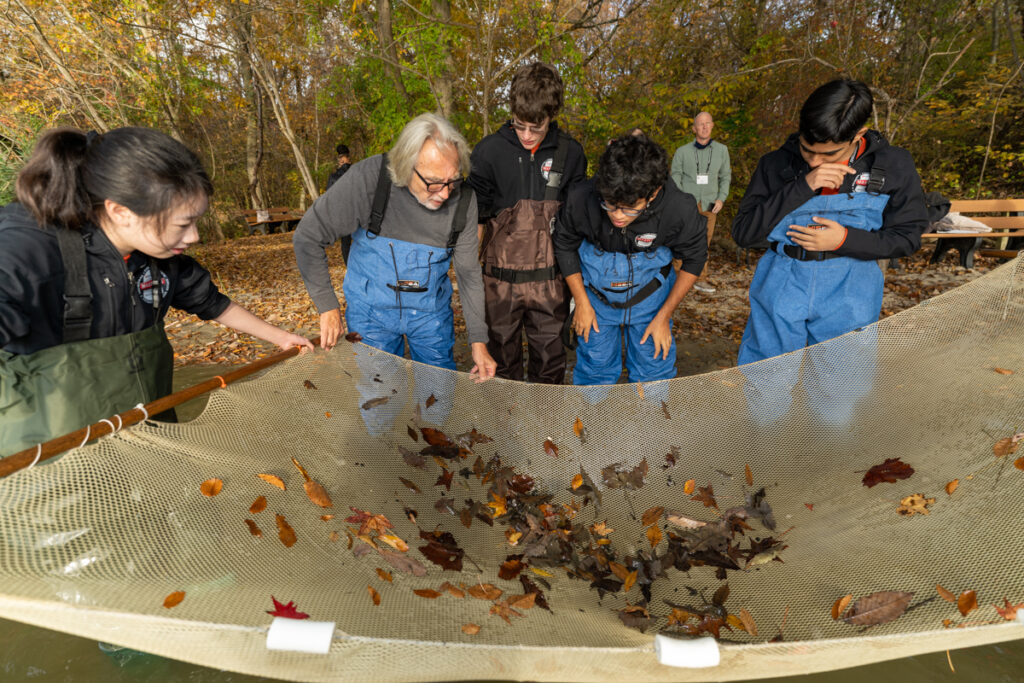
Their exploration continued indoors, where they cycled through six exhibits to observe fossils, models, diagrams and tanks of Chesapeake blue crabs from which to draw inspiration. The SERC team shared additional knowledge and answered the finalists’ questions as they studied the organisms.
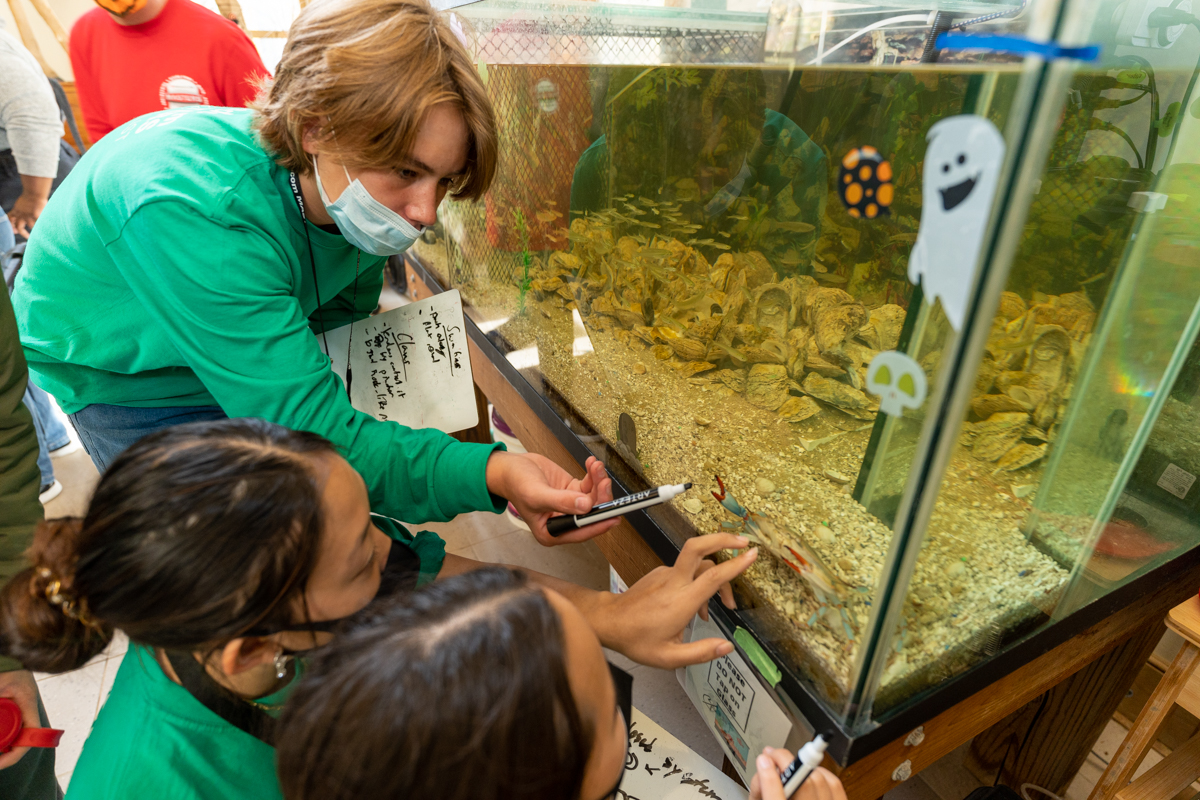
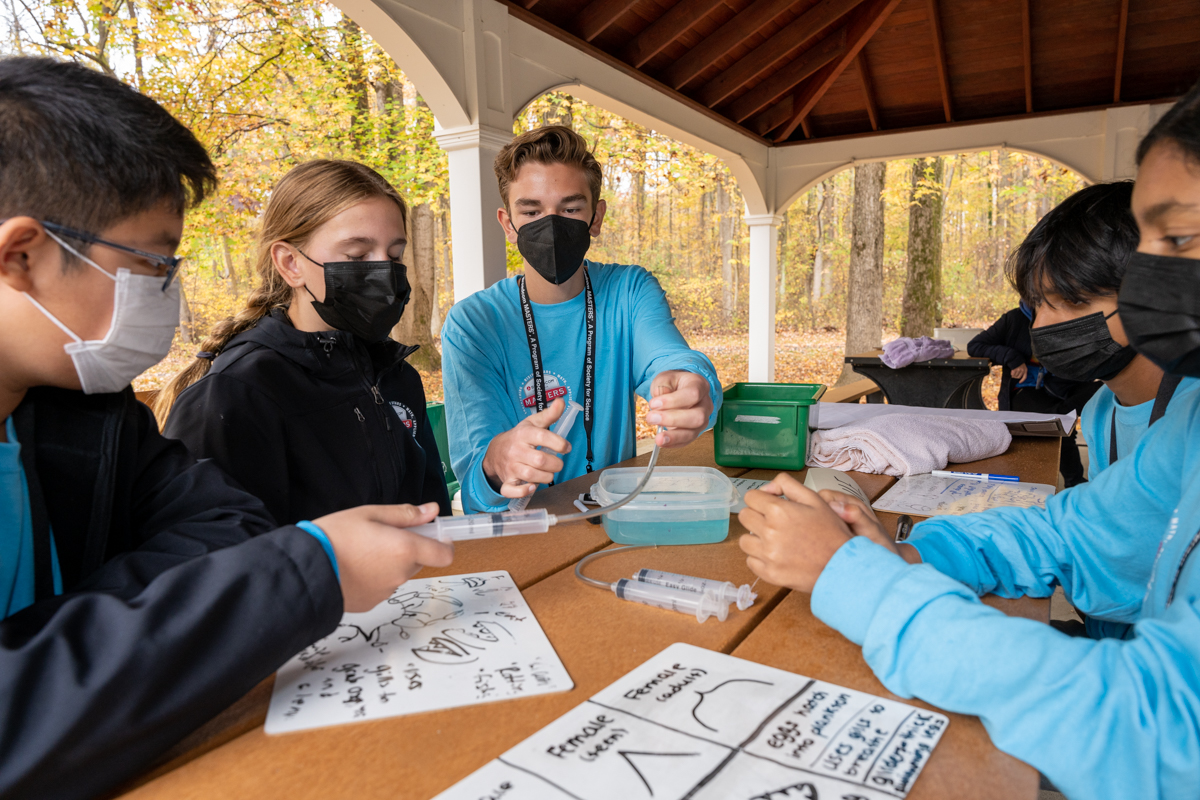
When the time came to design their biomimetic machines, the finalists were ready, although each team had to navigate unique obstacles as they perfected their designs. The purple team, for instance, created a clever design for an extendable arm which necessitated the creation of a specialized joint.
The teams all took different approaches, but each group ultimately created a viable solution. The silver team sprang into action, creating an intricate design at the outset, which they then worked to elegantly simplify over the course of the challenge. Meanwhile, when the blue team completed their machine early, they doubled down to add even more functionality to their device. The green team had so many ideas that they built two machines and tested them both before deciding on their final product.
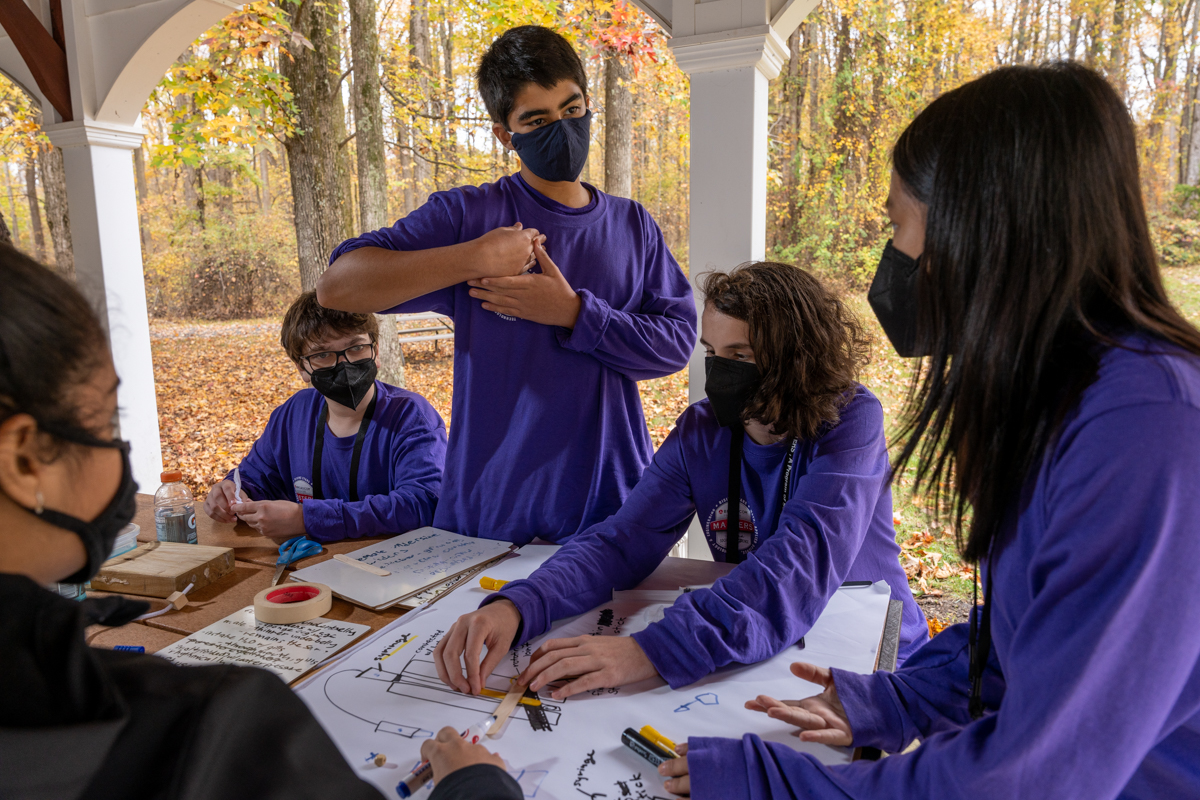
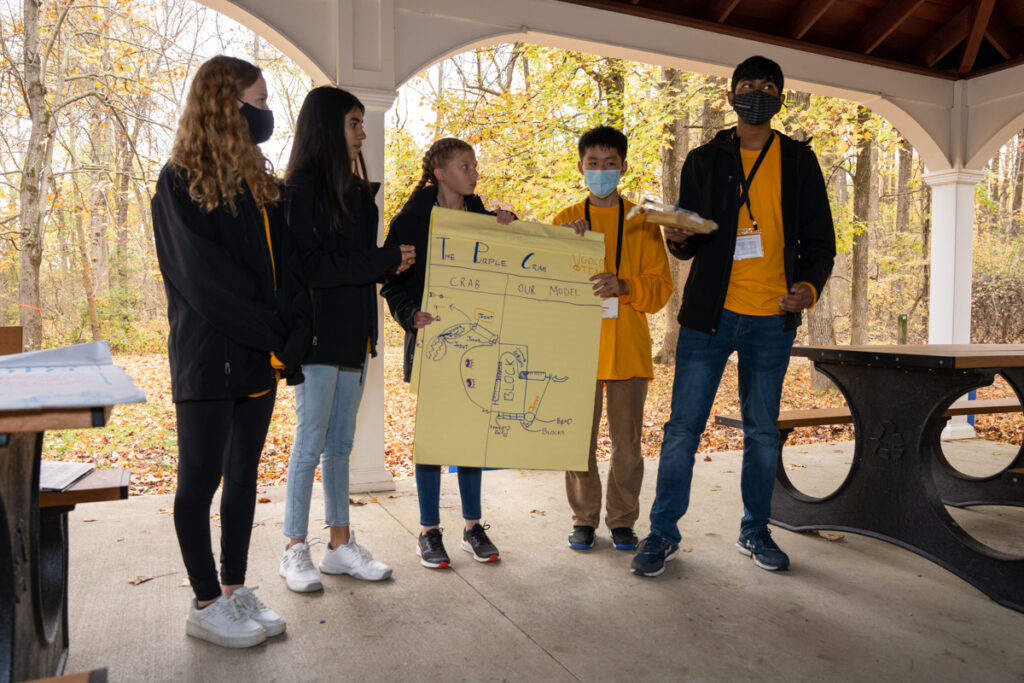
At the end of the challenge, each team presented their hydraulic arm to the entire group, along with their approach and the lessons they learned along the way. In addition to presenting their machine, which displayed functionality inspired by organic ligaments and tissue, the orange team emphasized how strong teamwork was the key to combining their many ideas into one effective design.
At the conclusion of the challenge, Karen congratulated the finalists on their creativity and teamwork. She even noted that after years of leading this activity with groups ranging from middle school to college-aged students, this year’s Broadcom MASTERS class created some truly innovative designs that she had never seen before.
Real-world engineering is fundamentally collaborative, and it takes great teams to solve important challenges. With their creativity, curiosity and cooperation, the 2022 finalists showed they are well on their way to bringing big ideas to life.
